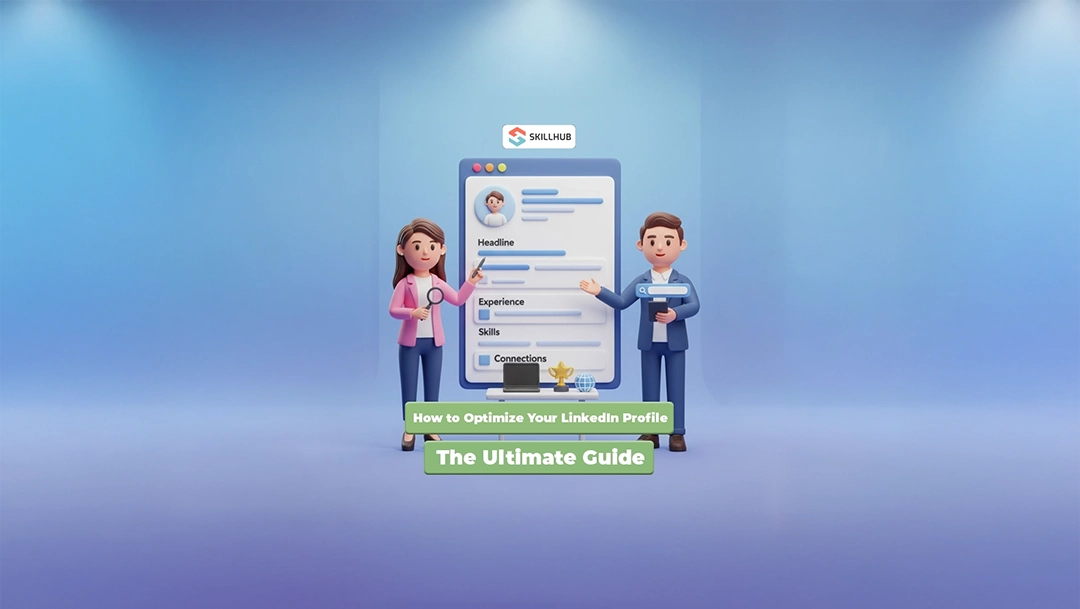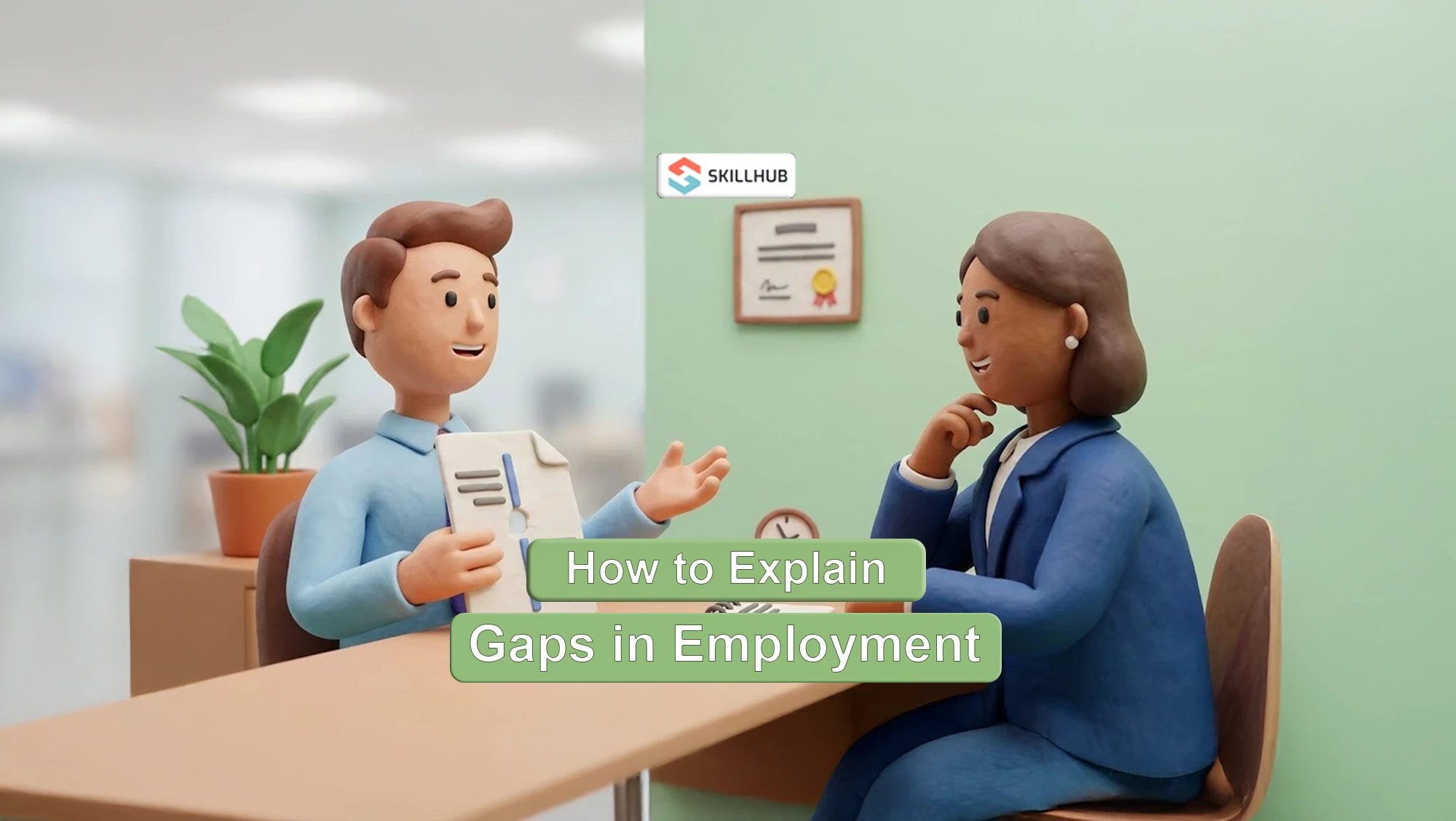How to Optimize Your LinkedIn Profile: The Ultimate Guide to Getting Recruiter Attention

In the modern job market, your resume is no longer your primary career document. Your LinkedIn profile is. It is your digital handshake, your 24/7 networking agent, your personal branding platform, and the single most important tool used by recruiters to find and vet candidates. A passive, incomplete, or unoptimized profile is the digital equivalent of an unlisted phone number you simply do not exist to the 90% of recruiters who use LinkedIn daily to source talent.
Conversely, a fully optimized, keyword-rich, and value-driven profile acts as a powerful magnet, pulling recruiters and opportunities to you, often for roles that are never publicly advertised. Your resume is a static document you push to employers; your LinkedIn profile is a dynamic asset that pulls opportunities to you.
This is not a "nice to have"; it is a non-negotiable component of a modern career strategy. This definitive guide provides a strategic, step-by-step framework for transforming your profile from a passive, resume-like database entry into a compelling, keyword-optimized sales page that gets you noticed.
The Foundational Shift: From "Resume Database" to "Search Engine"
The single biggest mistake professionals make is treating LinkedIn as a place to simply park their resume online. LinkedIn is not a document; it is a search engine. Recruiters do not "read" LinkedIn; they "search" it. They type in keywords like "Senior Product Manager," "SaaS," "Go-to-Market Strategy," and "Python," and the LinkedIn algorithm ranks the results.
If your profile is not densely populated with the correct, relevant keywords for your target role, you will not appear in these searches. Your goal is not just to have a profile, but to achieve a high "search relevancy" score for the jobs you want.
A resume is built to be read by a human after you've applied. A LinkedIn profile is built to be found by an algorithm before you've applied. This distinction is everything. You must shift your mindset from writing a 'history' to optimizing for 'discovery.
The Anatomy of a Perfect Profile: A Section-by-Section Optimization
We will treat your profile as a recruiter sees it, optimizing each section for maximum impact and algorithmic strength.
1. The "First Impression" (Your Photo & Banner)
- Your Profile Photo: This is non-negotiable. Profiles with a professional headshot get up to 21 times more views. It must be a high-quality, front-facing photo of you (and only you), smiling, with a neutral background. No vacation photos, no pets, no logos.
- Your Background Banner: This is the most wasted real estate on LinkedIn. The default blue banner is a sign of a lazy, incomplete profile. Use a custom banner that reinforces your professional brand.
- Good Options: A simple, high-resolution image of your work (e.g., code, a design, a speaking engagement), a banner with your key areas of expertise (e.g., "Digital Transformation | Agile Leadership | Cloud Strategy"), or your company's branding.
2. The Headline: Your 220-Character Sales Pitch
Your headline is the single most important piece of SEO real estate on your entire profile. It follows you everywhere in search results, in connection requests, and in comments. The default headline ("Job Title at Company") is a massive wasted opportunity.
You must optimize your headline for searchability and clarity.
Use a "keyword-pipe" formula: [Your Title] | [Key Specialization 1] | [Key Specialization 2] | [Key Skill 3]
3. The "About" Section (Formerly the Summary)
This is your cover letter. After your headline, this is the most-read section by recruiters who are interested. You have 2,600 characters to tell your career story, articulate your value proposition, and establish your professional "why."
Do not write this in the third person. It's awkward and distancing. Write in the first person ("I," "My") to build a direct connection.
A Winning "About" Section Structure:
- The Hook (1-2 sentences): A powerful summary of who you are and what you do. "I am a 10-year product leader passionate about building customer-centric fintech solutions that scale."
- The "Proof" (Bulleted List): Pull your 3-4 most impressive, quantifiable achievements from your career. This makes your value skimmable.
- Achieved 150% of quota for 3 consecutive years.
- Led a global team to launch a new product, acquiring 500K users in 9 months.
- Reduced operational costs by 22% by automating a key reporting process.
- The "How" (Narrative): A short paragraph on your philosophy, your leadership style, or your process. This shows your personality.
- The Specialties List (Keywords): A simple, bulleted list of your core skills. This is pure keyword optimization for the algorithm.
- Core Competencies: SaaS Strategy, Product Roadmapping, Agile/Scrum, User-Centered Design, P&L Management, etc.
- The Call to Action: Tell the reader what to do next. "I am always open to discussing new opportunities in the fintech space. Please send me a message or email me at [email@address.com]."
4. The "Featured" Section
This is your visual portfolio. It allows you to pin high-impact content directly to the top of your profile. Use this to show, not just tell.
- Pin your best work: A link to a project you led, an article you published, a presentation you gave, or your personal portfolio website.
- This is a crucial tool for building your personal brand visually.
5. The "Experience" Section: More Than a Copy-Paste
Do not simply copy and paste your resume bullet points. Your LinkedIn profile allows for a more narrative and complete story.
- Use All 2,000 Characters: For each role, write a 2-3 sentence paragraph that describes the scope of the role.
- Then, Use Bullet Points: Below the paragraph, add your 3-5 best quantified achievements for that role, just like on your resume.
- Add Media: This is a huge advantage. Upload a screenshot, a link to the project, or a PDF of a marketing campaign. Visual proof is incredibly powerful.
6. The "Skills & Endorsements" Section
This section is almost purely for the algorithm.
- You can add up to 50 skills. You should use all 50 slots.
- Pin Your Top 3: Pin the three most important skills for your target job to the top.
- The Keyword Strategy: Your "Skills" section must mirror the keywords from your Headline and About section. The algorithm rewards profiles with high keyword consistency.
- Endorsements: While less important, endorsements for your Top 3 skills add social proof.
7. Recommendations: The Ultimate Social Proof
Recommendations are the most powerful, and most difficult to obtain, asset on your profile. A single, glowing paragraph from a former manager or client is worth more than 100 endorsements.
- Be Proactive: The best way to get a recommendation is to give one.
- Be Specific: When asking for one, don't just say, "Can you write me a recommendation?" Ask for something specific: "Hi [Name], I'm updating my profile and was wondering if you'd be willing to write a brief recommendation about my work on the [Project Name], specifically my [Skill]?"
The Expertise Barrier: The Difference Between "Complete" and "Optimized"
Many people have a "complete" profile. All the sections are filled out. But a "complete" profile is not an "optimized" one. An optimized profile is a cohesive sales document where every section Headline, About, Experience, and Skills works in harmony to reinforce the same keywords and the same value proposition.
This is where most professionals fail. Their headline says one thing, their "About" section is a generic paragraph from five years ago, and their "Skills" section is a random list. It lacks a strategy.
Crafting this cohesive, keyword-driven narrative requires an objective, expert perspective. You must be able to look at your own career, identify the "golden thread" that connects your experiences, and translate that into a compelling brand that recruiters are actively searching for. This is not just writing; it is marketing and SEO for your career.
Conclusion: Your Profile is Your Platform
Your LinkedIn profile is your most powerful, persistent tool for career management. It is your resume, your portfolio, and your networking engine, all in one. By shifting your mindset from a passive historian to a proactive marketer, and by meticulously optimizing every section for both the algorithm and the human reader, you transform your profile from a digital tombstone into a magnet for opportunity.
Ready to turn your LinkedIn profile into a 24/7 recruiter-attraction machine? Consult with a Skillhub Career Expert today to get a complete resume and LinkedIn profile optimization.
%20(1).png)



%20(1).webp)